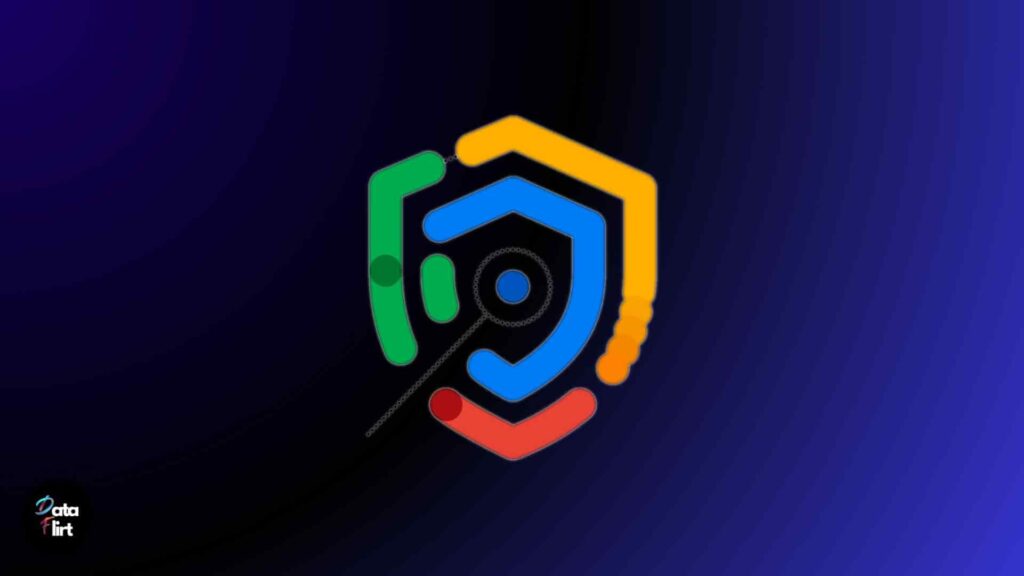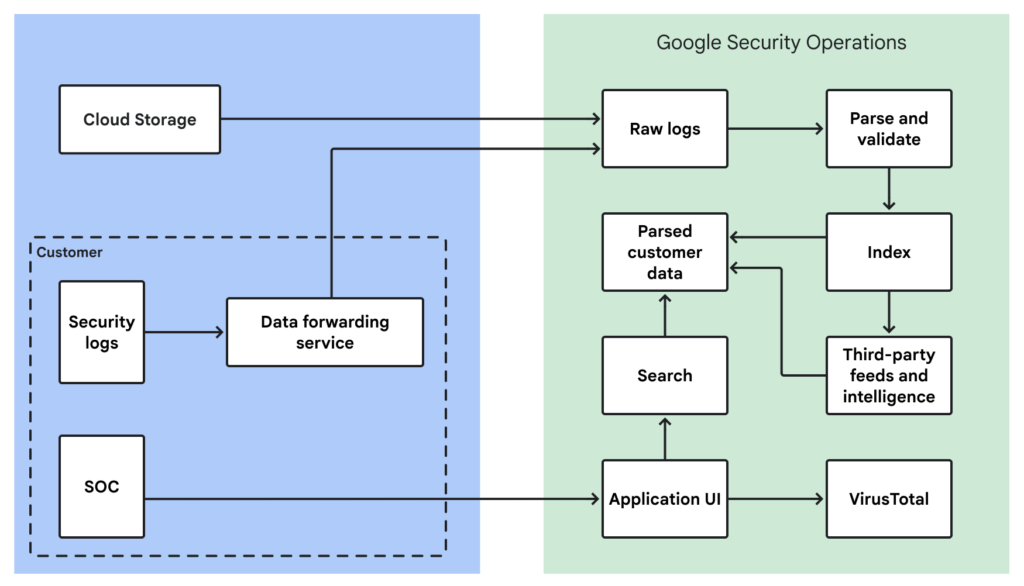Thwart Cyber Threats In Style With Optimized Google SecOps

In 2024, taking cognizance of the costs of cyberattacks, enterprises increased their annual IT security budget by 5.7 percent. If you’re heading security at your org, you would know how hard it is to get the budgets approved by any CFO. Anyway, it’s probably ‘the good times’ for security professionals; finally, cybersecurity is getting its fair share of attention. (Touchwood)
What’s fuelling this attention? The cost of not paying attention.
Who wouldn’t be extra cautious knowing that the cost of cybercrimes will surpass 15.63 trillion by 2029?
You read that right. 15.63 Trillion!!!
If you don’t plan to contribute to that number, you better amplify your cybersecurity arsenal. Shh, I’m letting you in on a secret…enterprise CIO & CISO leaders often turn to Google SecOps (formerly known as ‘Chronicle’) to streamline their security operations.
“Why Google SecOps,” you ask. Well, an IDC study revealed that Google SecOps clients command as much as $13.50 million in additional revenue per year on average. And that spike is (in)directly attributed to SecOps because it gives organizations secure innovative muscles.
Ah, by the way, Google SecOps is not the only tool where the money is flowing. When we earlier mentioned a 5.7% spike in annual security budgets, did you wonder where that extra fund for cybersecurity would go? Where your peer CIOs & CISOs are investing? A short answer would be, everything that bolsters enterprise security; both established and emerging security areas are under the radar; To be precise, Security Information and Event Management (SIEM) & Security Orchestration, Automation, and Response (SOAR) tools.
More specifically, for 60% of enterprises Cloud Security is a top priority, followed by Data Security (59%), Identity Threat Detection & Response (47%), Infrastructure Protection (36%), and Automated Security Control Assessment (37%) as other critical fronts where security investments are being channelized. SOC teams are betting big on tools like Splunk, Microsoft Sentinel, and Google SecOps.
Read this insight to the very end to understand how optimizing Google SecOps can help you flex your organizational innovation muscles by heavy-lifting a majority of your security concerns in a cost-effective manner. Let’s start with a primer on Google SecOps.
What’s Google SecOps? — A short primer for beginners.
Google SecOps, at the core, is a Gen-AI-led SIEM & SOAR platform, aka cloud service that lets you proactively collect, aggregate, normalize, correlate/analyze, auto-detect, investigate, and respond to security telemetry data i.e., logs, events, and incidents.

Google SecOps platform provides customers with a suite of security tools and features that are either natively built into the platform or can be integrated to extend the platform’s capabilities.
For example,
- To ingest log data, you have inbuilt Google’s SecOps SIEM which will collect raw data from forwarders, or you can use 3rd party connectors and webhooks.
- To normalize the data streamed/forwarded to your SIEM tool in order to analyze it, you get a set of 800+ parsers accessible at your fingertips.
Small, big, and many Fortune 500 companies rely on Google SecOps for a unified view of their SIEM, SOAR, and threat intelligence data. Some of the notable names in their clientele include Etsy, Groupon, and Pfizer.
One of the main reasons why enterprises are flocking to Google SecOps is its pricing model and log data storage capability. In a report, clients cited an average increase of 283% in data ingestion capabilities when they switched to Google SecOps compared to their last SIEM vendor platform.
Obviously, the economy of scale positions Google SecOps to gain a pricing edge over comparatively smaller players. Hence, depending on your use cases and the scale of security operations, you might be able to save a lot by making the switch to Google SecOps.
Wait, there is more to it.
Wouldn’t your eyes sparkle if we told you that you could save way more by optimizing your Google SecOps platform?
Yeah, that’s possible. You can further slash your SIEM costs.
“How?” you ask.
Well, first let’s get ourselves brushed up with prominent Google SecOps features and components so that we can explain on a high level how you may save more while improving your security posture by optimizing Google SecOps.
Dismantling Google SecOps Platform — One part at a time.
As mentioned earlier, Google SecOps provides your SOC team with the tools for SIEM & SOAR. Holistically speaking, they help you with the following capabilities-
Data Ingestion/Collection, Parsing, and Enrichment
Data can be ingested using-
- Linux & Windows Forwarders, which can be installed on the client’s end.
- BindPlane agent, which can be managed using the BindPlane OP Management console.
- Google Security Operations SIEM ingestion service’s APIs.
- Data Feeds from static cloud storage like AWS S3, or 3rd party APIs like Okta.
- Google Cloud Account, of course.
You can input both-
- Raw/processed log data from your network devices, servers, or security software or devices installed on-premise, cloud-based solutions, or
- Alerts from other SIEM solutions, EDRs, or Ticketing systems using SecOps’ SOAR connectors and Webhooks.
Any ingested data needs to be formatted as a Unified Data Model (UDM) structure, which is nothing but a standard structured schema that Google SecOps uses to store security data. This helps build semantic consistency when the influx of data is in varied formats from varied sources. And with the UDM approach, it’s easier to write platform-agnostic security rules.
But how do you format the raw data as UDM?
That’s where parsers come in.
You can use pre-built parsers if your log type source is available in Google SecOps’ pool of 800+ parsers, or you can use your own custom parsers.
Lastly, once your UDM data is ready, Google Security Operation services enrich your data from various sources by adding contextual data about artifacts using-
- Entity graph and merging
- Safe Browsing threat list
- Geolocation data
- WHOIS data
- VirusTotal data
- Google Cloud Threat Intelligence (GCTI) data
Threat Detection
When your security data is ready to be consumed by Google Security Operations’ downstream systems, you can use YARA-L language to configure Rules to trigger alerts for threat detection, and use Google SecOps innate ability to correlate vast number of suspicious security Indicators of Compromise (IOC).
Google provides a very rich set of rules-related features to put you in control of how proactively you want to deal with security threats— from Rules Dashboard for viewing rules and their previous versions to rules editor for managing rules, configuring their run frequency, archiving them, dealing with rule detection limits, and performing context-aware risk scoring and severity analytics; you get everything needed for ‘threat detection’ off-the-shelf.

Threat Investigation & Intelligence
What happens after alerts get triggered or your set rule-based events/incidents are detected? Maybe, you can respond, or you can investigate further. The good news is that Google SecOps gets it. They provide tools to perform forensics-grade investigation on your raw log data, UDM data, or context-enriched data. You can use timestamps, regular expressions, boolean operators, and various filters available for the involved entities under different investigative views— user, asset, IP address, Files, and Hash views. Each of these views has enormous data to perform root cause analysis of security incidents.
Nevertheless, as an extra layer of security, Google SecOps Applied Threat Intelligence (ATI) helps you discover any occurrence of IOC matches that are curated by Mandiant threat intelligence. At the core, these too are alerts contextualized by Yara-L using Curated Detection.
Threat Response
Lastly, all the detection and investigation pave the way for threat prevention or mitigation by safeguarding your enterprise security fencing, aka defense system. The threat response is mainly about playbooks— triggers, actions, and flows.
- Triggers are a way of activating a playbook based on threat detection & investigative insights.
- Actions are a set of tasks that need to be completed in response to the threat.
- Flow defines how a set action gets implemented.
You can even use remote agents and custom code and integrations to create a robust threat response system. For example, you can use Google Security Operations’ Agent to execute private actions on your remote site in response to an incident.
Gemini Stitched Right Into The Google SecOps Fabric
Gemini comes integrated into your Google SecOps platform. You can use it to generate UDM search queries, write custom YARA-L rules for threat detection, use it as your threat analytics research partner, create playbooks, or just understand Alerts and the Actions that can be performed to mitigate the threats.
Reimagining Your Enterprise Security by Optimizing Google Security Operations
All this is cool, and now it’s time for the crux of this blog. Google SecOps is all great, but can you further optimize it for cost efficiency while squeezing everything that it has to offer? Yup, you can.
Inflating Data Orchestration Costs
IT Telemetry data storage and forwarding volume is a major cost factor in SIEM & SOAR tools. Disparate IT systems within an enterprise (including Cloud & on-premise) generate tons of data, then be it from EDR consoles, firewall logs, vulnerability scans, employee activity, or IAM tools. Terabytes of data get generated on a daily basis depending on your organization’s scale. But not all of this data is security critical. Some of it is sheer noise. Calling it ‘junk’ won’t hurt anyone’s sentiments. Forwarding, processing, or storing this data in raw or UDM format is just a waste of your resources. These leakages can quickly inflate to jaw-dropping costs, often north of 6,7 figures.
You may fix such leakages in the following ways:
1. Extended Set of Parsers Solve The Data Usability Challenges
There are platforms that help you with telemetry data orchestration. They provide managed Google SecOps services. You may even find vendors who provide pre-built connectors and integrations to complement Google’s 800+ connectors. This saves you enough time and money that you would have alternatively invested in designing parsers for normalizing raw log data into UDM format from all your edge nodes.
2. Relevance-based Data Orchestration Solves The Volume Challenge
The influx of AI-powered security solutions can help you significantly reduce data ingestion volumes. Obviously, not all the data would make sense. Some are less critical, some are sensitive data. Context-aware volume reduction solution would ensure that only security-value-worthy data gets forwarded to Google SecOps, and the less critical data gets filtered or pushed to cheaper storage alternatives, maybe even dumped on-premise in your own data lake. More relevant data translates into faster attack/anomaly detection and prepares the ground for proactive response/remediation.
3. System-aware and Context-aware Security Data Enrichment & Intelligence
Managed SIEM solutions not only separate the less critical data to improve the data usability and insights quality but also enrich UDM-modeled data. This facilitates SOC teams later to effectively leverage Google SecOps search capabilities to deeply investigate the events, and subsequently configure comprehensive response triggers to filter out less critical events and channel the team’s effort towards those incidents that impact the business bottom line. This translates to enhanced talent productivity, faster threat mitigation, faster shipping of new features to the market, and ultimately more revenue while optimizing your Cybersecurity budget utilization.
4. Enhances Interoperability Among Your Entire SOC Stack
Another good perk of weaving your security fabric with a managed SIEM solution is the flexibility and freedom it provides to your SOC team. Today, most of the companies have an evolving infrastructure. The bigger it grows in size, the lesser the freedom to experiment with new platforms.
Often, you get pigeonholed into doing the best you can with your existing vendors because the cost of switching overcasts the benefits of switching.
But not anymore with managed SIEM solutions; your SOC team will not find themselves in vendor lock-in situations.
You can anytime make the switch to any platform that best serves your goals- then be it Microsoft Sentinel Google SecOps or any other platform.
Ready to leap into futuristic and proactive security?
Keep rocking!